
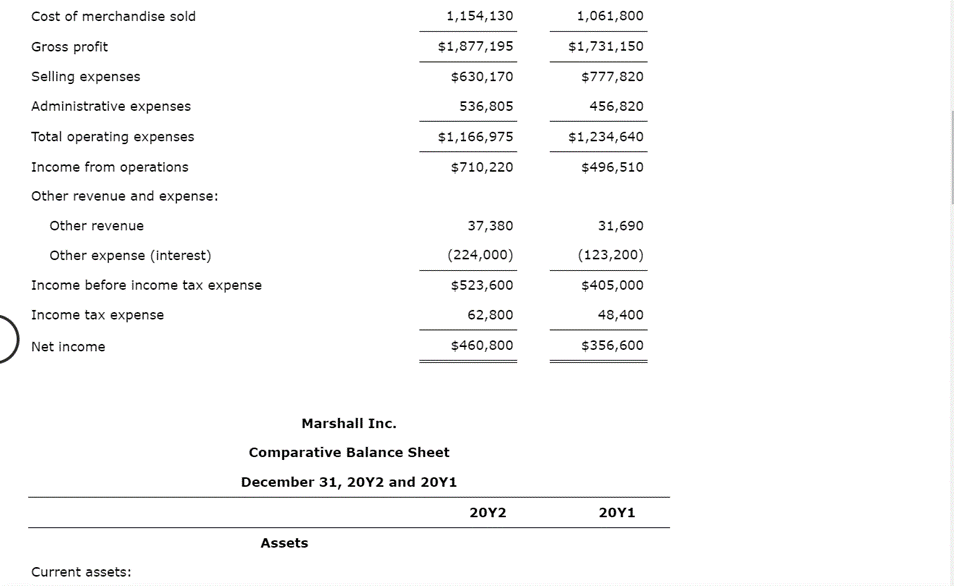
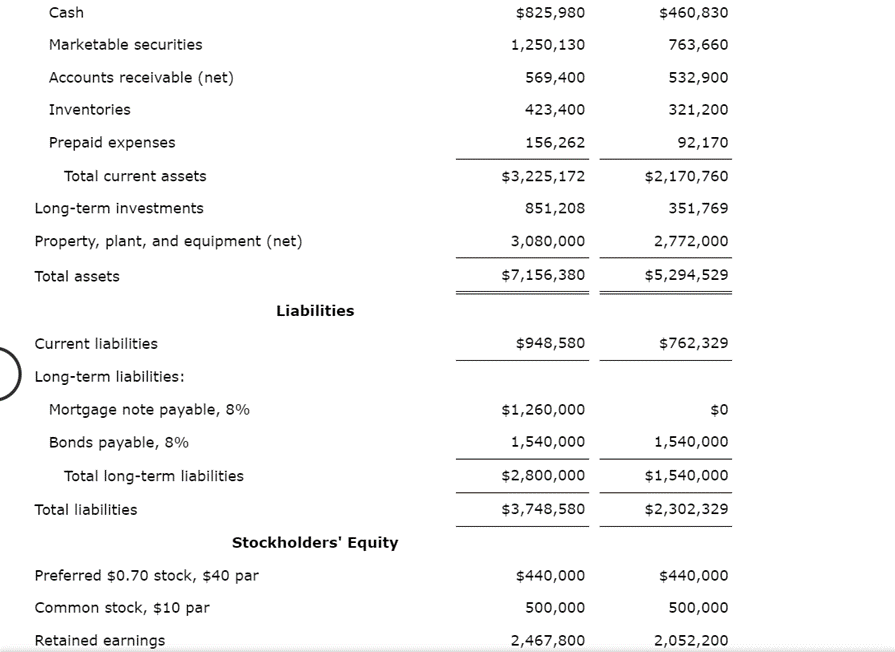
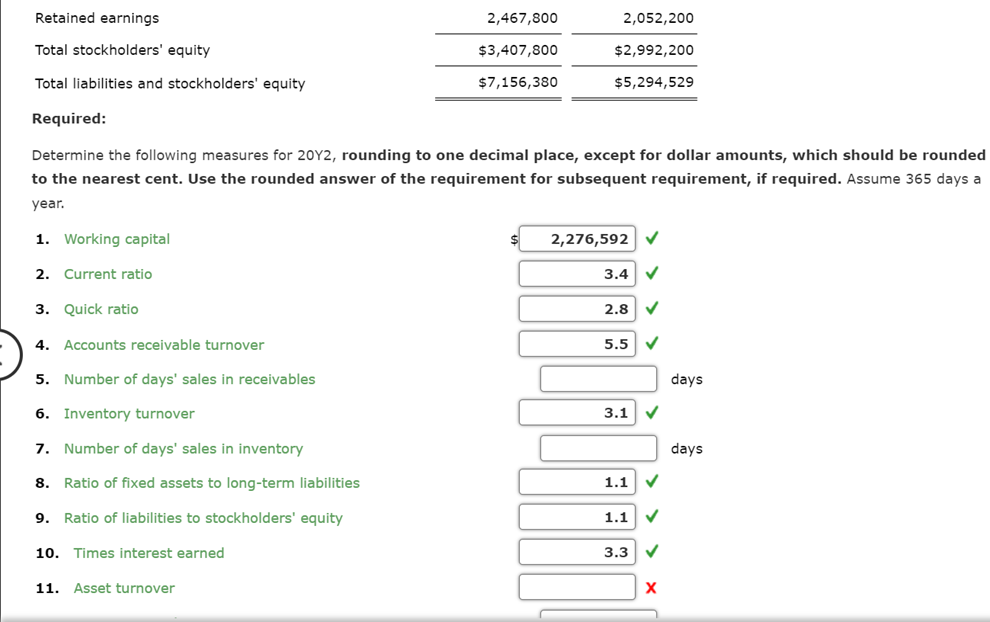
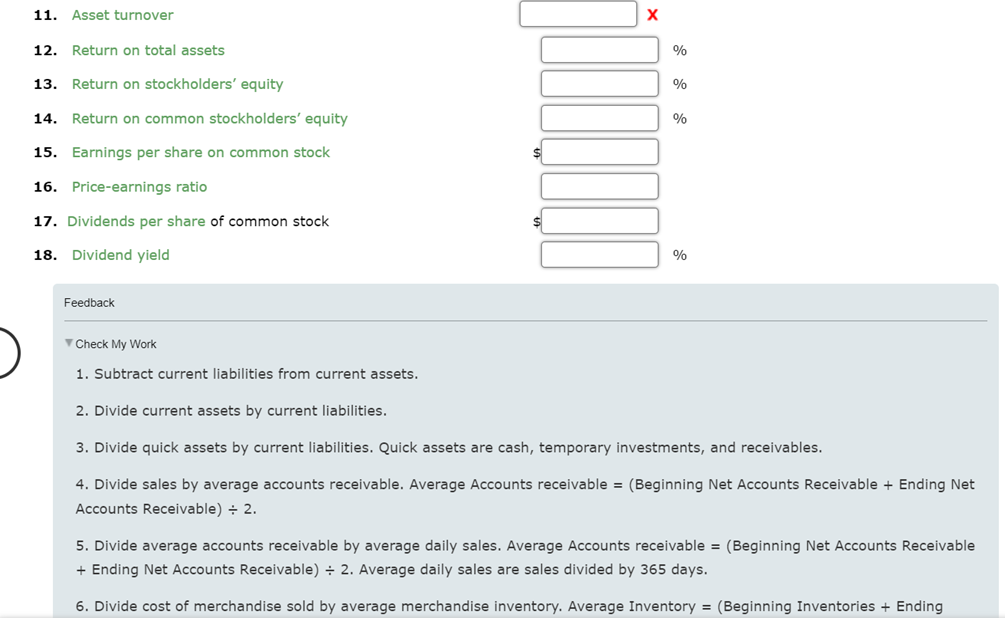
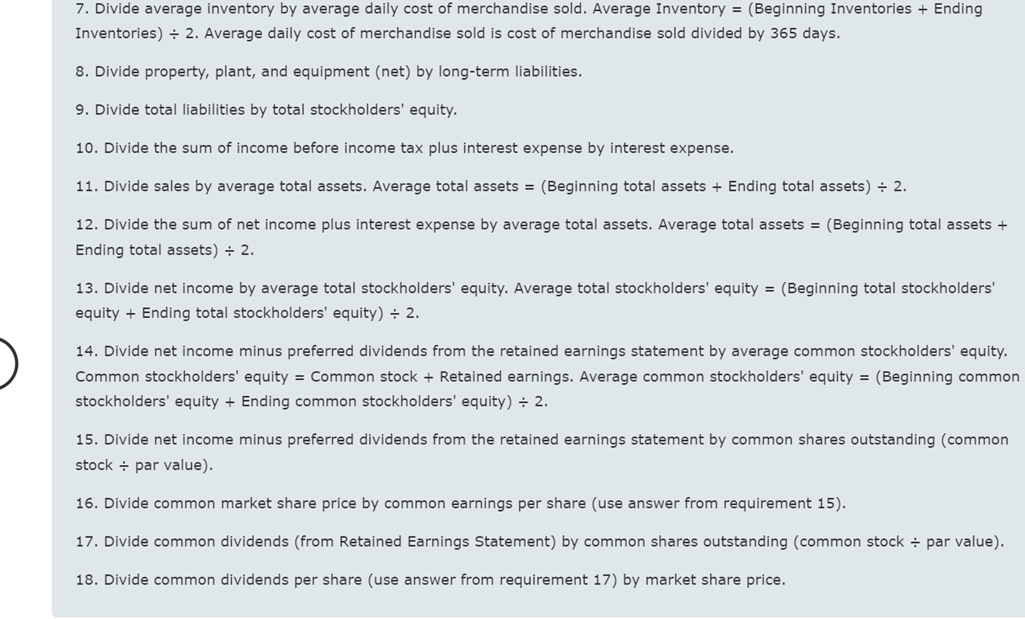
Measures of liquidity, Solvency, and Profitability The comparative financial statements of Marshall Inc. are as follows. The market price of Marshall common stock was $58 on December 31,20Y2. Marshall Inc. Comparative Retained Earnings Statement Marshall Inc. Comparative Income Statement Marshall Inc. Comparative Balance Sheet December 31,20Y2 and 20Y1 Liabilities Current liabilities $948,580$762,329 Long-term liabilities: Mortgage note payable, 8% Bonds payable, 8% Total long-term liabilities Total liabilities Stockholders' Equity Preferred $0.70 stock, $40 par Common stock, \$10 par Retained earnings 2,467,8002,052,200 Determine the following measures for 20Y2, rounding to one decimal place, except for dollar amounts, which should be rounded to the nearest cent. Use the rounded answer of the requirement for subsequent requirement, if required. Assume 365 days a V Check My Work 1. Subtract current liabilities from current assets. 2. Divide current assets by current liabilities. 3. Divide quick assets by current liabilities. Quick assets are cash, temporary investments, and receivables. 4. Divide sales by average accounts receivable. Average Accounts receivable = (Beginning Net Accounts Receivable + Ending Net Accounts Receivable) 2. 5. Divide average accounts receivable by average daily sales. Average Accounts receivable = (Beginning Net Accounts Receivable + Ending Net Accounts Receivable) 2. Average daily sales are sales divided by 365 days. 6. Divide cost of merchandise sold by average merchandise inventory. Average Inventory = (Beginning Inventories + Ending 7. Divide average inventory by average daily cost of merchandise sold. Average Inventory =( Beginning Inventories + Ending Inventories) 2. Average daily cost of merchandise sold is cost of merchandise sold divided by 365 days. 8. Divide property, plant, and equipment (net) by long-term liabilities. 9. Divide total liabilities by total stockholders' equity. 10. Divide the sum of income before income tax plus interest expense by interest expense. 11. Divide sales by average total assets. Average total assets =( Beginning total assets + Ending total assets )2. 12. Divide the sum of net income plus interest expense by average total assets. Average total assets =( Beginning total assets + Ending total assets) 2 13. Divide net income by average total stockholders' equity. Average total stockholders' equity =( Beginning total stockholders' equity + Ending total stockholders' equity) 2. 14. Divide net income minus preferred dividends from the retained earnings statement by average common stockholders' equity. Common stockholders' equity = Common stock + Retained earnings. Average common stockholders' equity =( Beginning common stockholders' equity + Ending common stockholders' equity) 2. 15. Divide net income minus preferred dividends from the retained earnings statement by common shares outstanding (common stock par value). 16. Divide common market share price by common earnings per share (use answer from requirement 15). 17. Divide common dividends (from Retained Earnings Statement) by common shares outstanding (common stock par value). 18. Divide common dividends per share (use answer from requirement 17) by market share price












